Nature is an incredible artist providing beautiful landscapes full of plants and fascinating animals. However, not everything is friendly and cuddly, as we could see if we interact with wild animals. But the trees can be hostile animals, and in some cases, you just need to pass under them to cause illness. So let's take a look at the top ten trees that are out to get us!
10. Milky Mangrove
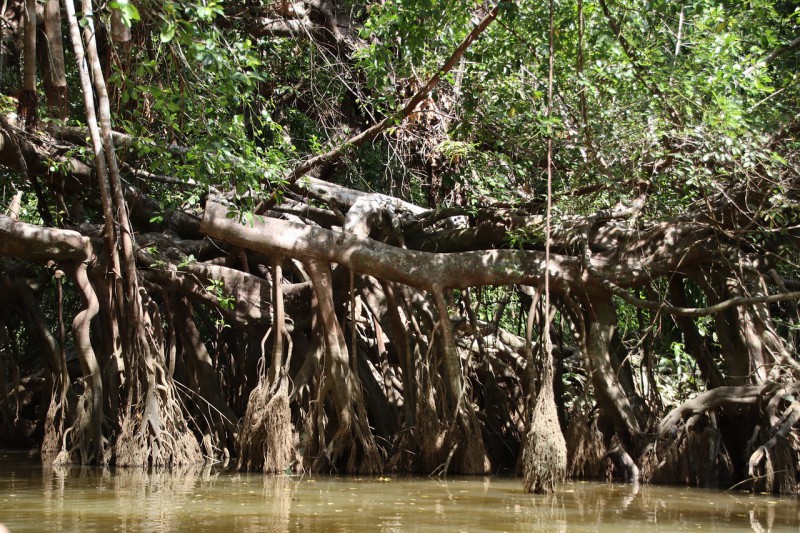 Milky mangrove can cause temporary blindness (Photo: Matthias_Lemm/pixabay.com)
Milky mangrove can cause temporary blindness (Photo: Matthias_Lemm/pixabay.com)
Excoecaria agallocha is native to India, Australia, and Bangladesh. The tree thrives in mangrove habitats, as the name suggests. Hence, from the title, we can also conclude that it has milky sap. The sap contains poison causing skin irritation, blistering, and even temporary blindness if in contact with the eyes.
The milky mangrove tree is called the poison fish tree as it can instantly kill the fishes. In earlier days, the hunters used it to make toxic darts. However, don't use it for generating heat, as the smoke can also harm the eyes.
9. Stinging Trees
Gympie Gympie sounds like fun, but if you stumble on this tree, you won't like it!
The scientists say these are shrubs or bushes, but they are also referred to as trees. You must think that Gympie Gympie needs to be here just for its cute name! Dendrocnide moroides are native to northeast Australia and Indonesia, and it's most toxic of all Australia's stinging trees. The stinging hairs covering the whole herb penetrate the skin and release neurotoxin.
Therefore, the unlucky ones encountering the tree describe the pain as unbearable and ten times worse than anything they've experienced. Ongaonga or Urtica Ferox is an endemic species in New Zealand. It contains a toxin called tryfydin that, in large dosage, can, among other harmful reactions, cause paralysis and even death.
8. Common Yew
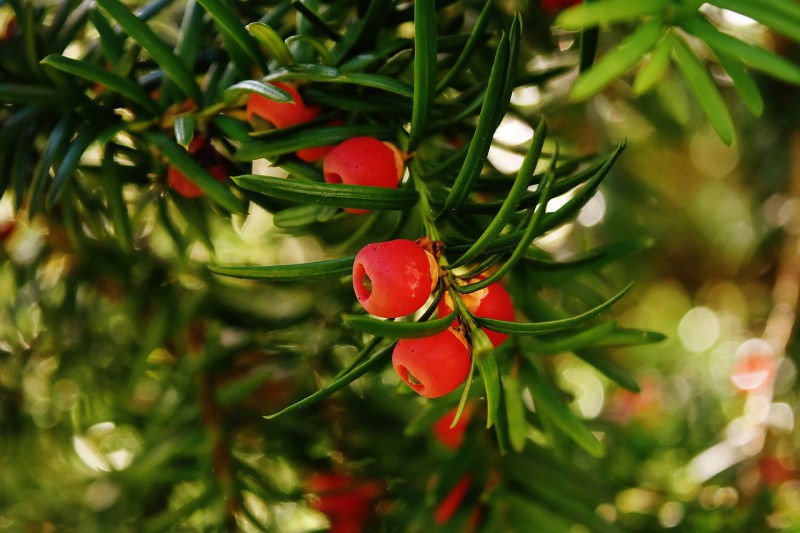 Common yew might be used in landscaping as it's charming, but it's full of toxin (Photo: Alexas_Fotos/pixabay.com)
Common yew might be used in landscaping as it's charming, but it's full of toxin (Photo: Alexas_Fotos/pixabay.com)
Taxus baccata is spread all over central and southern Europe, southwest Asia, and northwest Africa. It's one of the oldest species in Europe, often used for landscaping. However, common yew is highly toxic if ingested, as only the fruit itself (without the seed) is not poisonous.
Moreover, the venom taxine alkaloids can cause cardiac arrest or respiratory failure if ingested. Also, it can provoke death to livestock and even to humans if they don't seek help in time. However, when the tree is cut and dried, the concentration of toxins increases. Moreover, there have been few poisoning cases from inhaling sawdust.
7. The Trees That Can Attack You!
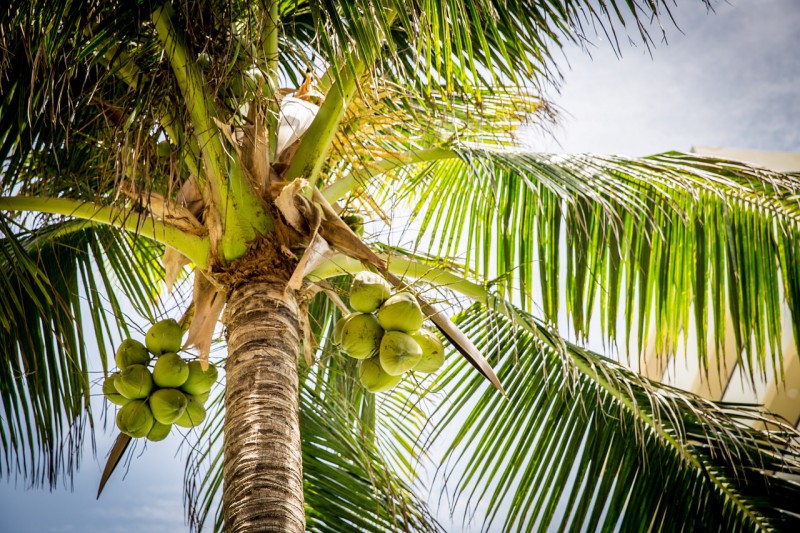 We wouldn't recommend standing under the banya or coconut tree (photo: Pexels/pixabay.com)
We wouldn't recommend standing under the banya or coconut tree (photo: Pexels/pixabay.com)
Yes, the tree can attack you or even possibly kill you! We all know about the coconut tree and possibly love the taste of its healthy fruit. However, it's pretty dangerous to climb or stand directly under it, as the fruit can drop off and kill you if it hits your head. So enjoy the taste and leave climbing and harvesting coconuts to the experienced.
Even worse is Araucaria bidwillii or Bunya Pine, native to Australia. It can grow up to 150 feet, and its cones can be the size of a soccer ball. Hence, we'll leave you to calculate what happens when it hits you from that height in the head, as it's not hard to conclude.
6. Sandbox Tree
Sandbox tree has a very interesting nickname, monkey no-climb
Hura crepitans is a tree native in North and South America, but it can also be found in Tanzania. It's also known as jabillo and possumwood, although it's usually identified as a sandbox tree. It can grow up to 200 ft, and its treetop can be up to two feet wide. Its scape is covered with cone-shaped spikes causing harm if you try to climb, so no wonder the nickname "monkey no-climb." Moreover, it's also known as a dynamite tree, and this epithet comes from its deadly nature.
This is because its pumpkin-like fruits are ticking bombs that can explode at any time as they reach maturity. Moreover, the seeds can fly more than 150 feet in the distance and with relatively high speed, causing harm to everyone in their way. Still, it has one more problematic characteristic, as its poisonous fruit causes diarrhea, vomiting, and cramps if ingested.
5. Trees Used as a Poison
Suicide tree was used in India to commit suicide or homicide. It's still unclear
We have a few trees that have been used to poison animals, even humans, but we've chosen two of them that deserve to be on our list.
Strychnine tree or Strychnos nux-vomica is native to India and Southeast Asia. Its apple-shaped fruit has disc-like seeds that contain poison. Hence, once ingested, it can cause heart problems, kidney and liver failure. Yet, the ancient hunters used it for making poisonous arrows.
Nevertheless, during the plague in the 14th-century, strychnine was useful in killing rats and stopping the disease. Cerbera odollam, or suicide tree, is native to India, and it contains cerberin toxin. The poison is easily camouflaged in spicy food and causes heart failure. During the 20th century, autopsies have discovered many deaths caused by this toxin.
4. Castor Bean Tree
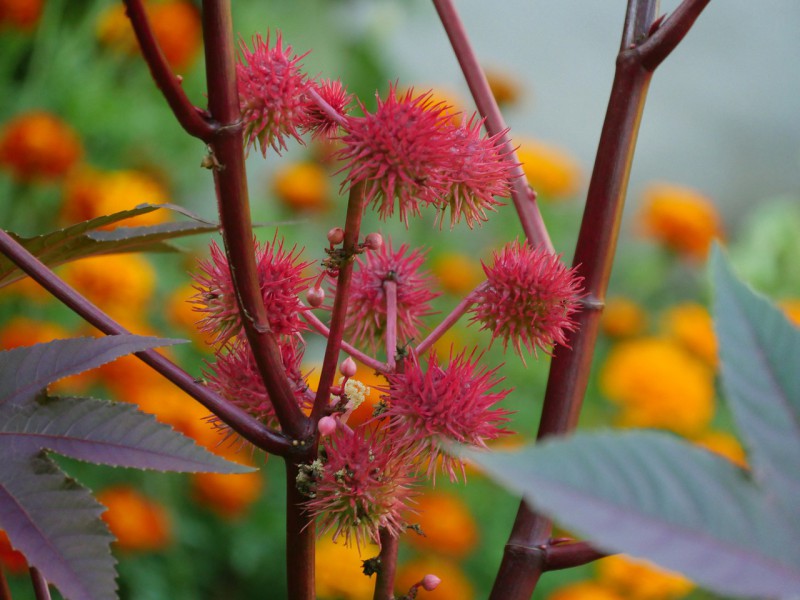 Castor bean tree is the most common poisonous plant (Photo: MonikaP/pixabay.com)
Castor bean tree is the most common poisonous plant (Photo: MonikaP/pixabay.com)
Ricinus communis is native to East Africa, but it has spread on all tropical and subtropical terrains. This large shrub or small tree contains a toxin called ricin. The poison can harm people, as eight seeds are enough to kill you. Even the book of Guinness World records has enlisted it as the most poisonous common plant.
The effect of consuming the seeds or venom can last for a few weeks, but if treated, symptoms can be cured. Castor bean trees can be grown even if it's potentially dangerous, but extracting oil from the seeds is illegal.
3. Namibian Bottle Tree
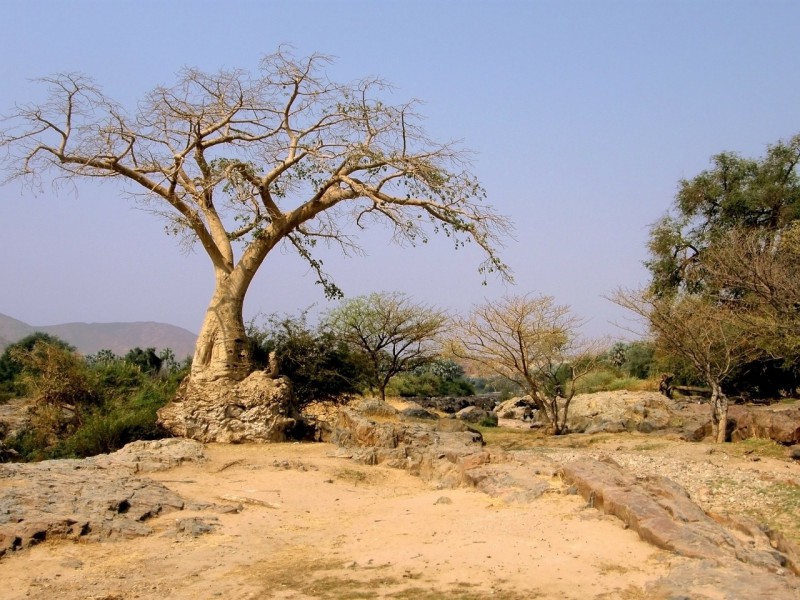 Sap of Namibian bottle tree is used for poisoning the arrows (Photo: PublicDomainPictures/pixabay.com)
Sap of Namibian bottle tree is used for poisoning the arrows (Photo: PublicDomainPictures/pixabay.com)
Pachypodium lealii is common in southern Angola, and as the name says, Namibia. This endemic species can survive high temperatures producing its own water, full of toxic alkaloids. The locals have used it to poison their arrows as it can cause blindness, among other side effects. So once you set your eyes on the tree, it may be the last thing you saw.
Namibian Bottle Tree has a wide trunk with spiny branches. Moreover, it reaches up to 26 feet in height. In Namibia, the tree is among the protected species.
2. Rosary Pea Plant
Rosary Pea Plant is highly toxic but also very beautiful
Abrus precatorius is native to Australia and Asia. However, the plant is very invasive, so it can be found in Africa, the Pacific region, and even Florida and Hawaii. Rosary pea plant contains a poison called abrin that, once ingested, is highly hazardous to humans. Hence the venom can cause death, or in the milder cases, vomiting, diarrhea, abdominal pain, or even organ failure.
Although the entire plant is toxic, the seeds are most dangerous. These scarlet-red beans with a black dot are pretty and used in jewelry making. So handling the beans takes a lot of expertise, as once the hard shell is broken, the toxic can come out.
1. Manchineel Tree
Nicknamed "little apple of death," the Manchineel tree is in the Guinness book of records as the deadliest in the world
Hippomane Mancinella has a reputation as the deadliest tree. Native to the Caribbean, South America, and Florida, it can grow up to 50 ft. Its name originates from the Spanish word for "little apple." Hence it's often called Manzanilla de la Muerte, or "little apple of death."
The tree has a thick milky sap that contains poison, found in all plant parts. Moreover, it's so toxic that even standing under it during the rain can cause blistering. Thus, the poison is so dangerous that it can harm the skin, even when diluted. Furthermore, it may cause blindness if it comes in contact with the eyes, and if ingested, it can be fatal.
All those lovely trees out there are not just beautiful, as some of them are out to get you. So think twice before you seek a shadow as something can hit you in the head from above. And by all means, do not consume anything in the wilderness if you are unsure of its edibility. There's plenty of other deadly food anyways.
We hope you have enjoyed our top ten list of the deadliest trees and shrubs and learned which ones to avoid. Have you ever heard of the harmful side of these trees? Did you or someone close to you experience dangerous interactions with some of them?
Cover photo: TopTens.fun/Midjourney